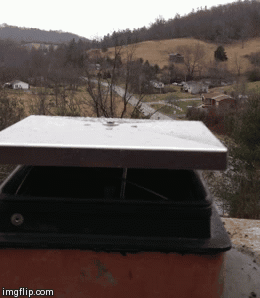When it comes to fireplaces and chimneys, much of the technology is as similar today as it was several decades ago. However, there have been several advancements in the fireplace industry that are advancing chimney technology into the 21st century. One of the most popular new advancements in the chimney industry is the top sealing damper.
What is a top sealing damper?
A top sealing damper is a chimney damper that is located at the top of the chimney structure, sealing the entire chimney and flue off from the outside. This is different from the traditional throat damper that is located at the top of the firebox; throat dampers only seal off the firebox, leaving the rest of the chimney exposed to outside air.
Top sealing dampers continue to grow in popularity because of their safety, functionality, and efficiency. By sealing off the entire chimney when not in use, there is minimal risk of animals, debris, or moisture entering the chimney. Likewise, keeping the chimney sealed off from outside air can minimize fluctuations in air temperature within the flue; this can make it easier when starting a fire by eliminating the need to warm up the flue, as well as help save money on heating and cooling costs.
Will a top sealing damper replace my chimney cap?
Because a top sealing damper sits at the top of your flue instead of just above the firebox, it takes the place of and has the functionality of a chimney cap. In some ways, top sealing dampers may even be better than a chimney cap at keeping out moisture, debris, and animals; because it forms an airtight seal when not in use, there is no chance of anything getting into the flue when the damper is closed.
Just like a throat damper, top sealing dampers should always be opened any time the fireplace is in use. Opening the damper when starting a fire, burning, or letting a fire extinguish prevents the backup of smoke and dangerous gasses such as carbon monoxide in your home.
How are top sealing dampers more efficient?
One common question about top sealing dampers is how they can be more efficient. While a top sealing damper may not burn firewood better or produce less smoke or creosote, they can impact your monthly heating and cooling bills. By sealing off the entire chimney structure from outside air – as opposed to leaving it open to temperature changes – the air temperature in the chimney and surrounding rooms is less likely to change. In turn, a more standard temperature with fewer fluctuations can cause the heater or air conditioning to engage less; by keeping the temperature standard inside, you can save money each month on the utility costs associated with losing conditioned air.
A top sealing damper can do more than just make your fireplace more efficient; it can also save you money on heating and cooling costs every month. For more information on what a top sealing damper can do for your fireplace and chimney system, contact the experts at Pristine Sweeps today!

